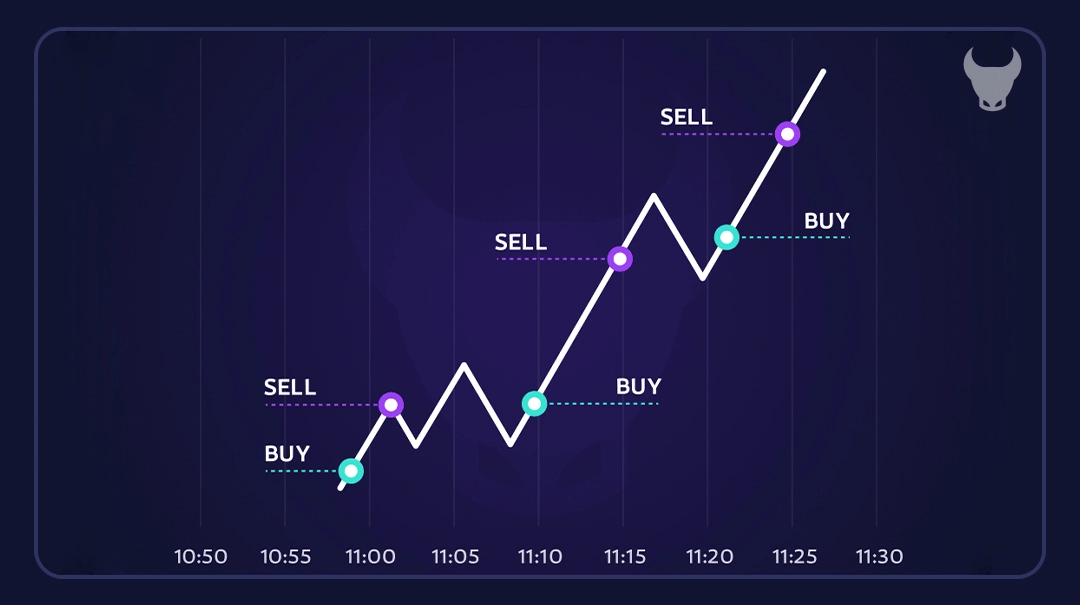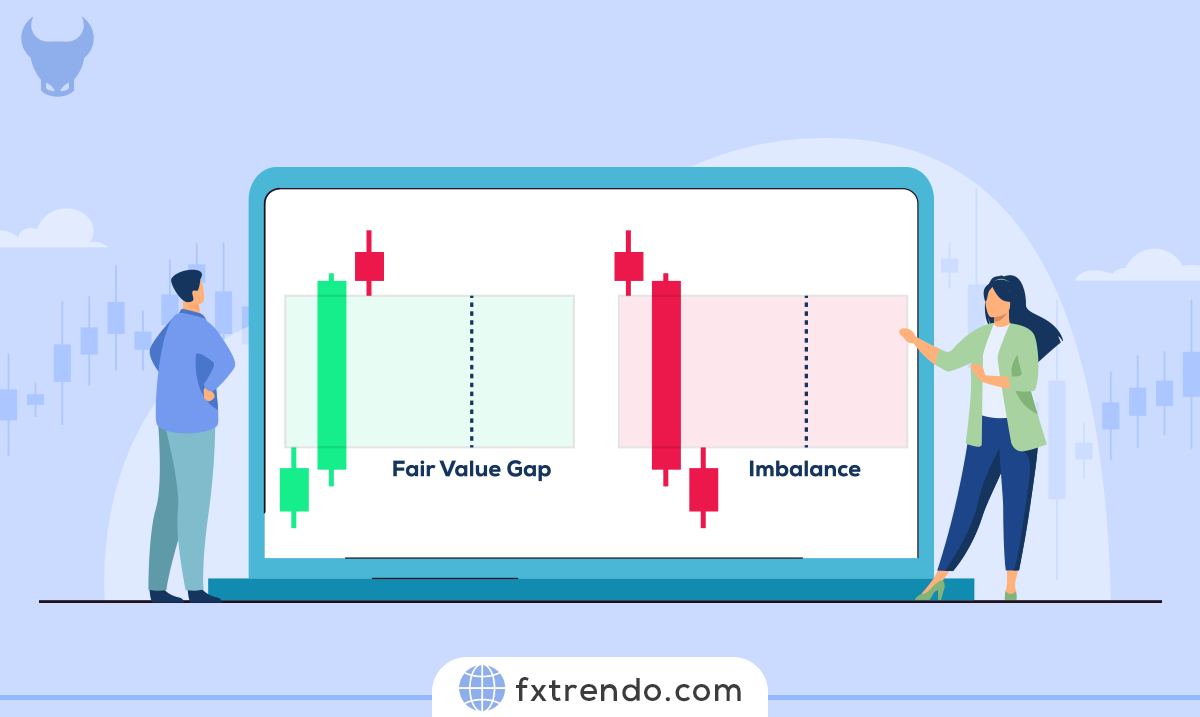In this ultimate guide, we’ll explore the best currency pairs for scalping in 2024. Scalping involves making quick trades to take advantage of small price movements, and choosing the right pairs is crucial for success.
We’ll delve into pairs with high liquidity and low spreads, such as EUR/USD, GBP/USD, and USD/JPY, which are ideal for scalping. Additionally, we’ll discuss how incorporating mindfulness meditation into your routine can enhance your focus and decision-making skills, helping you stay calm and collected during trades.
Whether you’re a seasoned trader or just starting out, this guide will provide you with valuable insights to refine your scalping strategy and achieve your trading goals.
Let’s dive in and discover the best Forex pairs to scalp in 2024!
What is Forex Scalping?
Forex scalping is a trading strategy focused on making numerous small trades throughout the day to profit from tiny price movements. Unlike long-term trading strategies that aim for significant price changes over days, weeks, or months, scalping targets quick, incremental gains. Traders who use this method, known as scalpers, typically hold their positions for just a few seconds to a few minutes.
The primary goal of scalping is to “scalp” small profits repeatedly, which can accumulate into substantial gains over time. This strategy requires a high level of concentration, quick decision-making, and the ability to execute trades rapidly. Scalpers often rely on technical analysis, using charts and indicators to identify short-term price patterns and trends.
Briefly, Forex scalping is about capitalizing on small price fluctuations in a highly efficient manner. It’s a fast-paced and dynamic trading style that can be highly rewarding for those who master it.
What are the Advantages of Forex Scalping?
Forex scalping offers several advantages that make it an attractive strategy for many traders. Here are some key benefits:
1. Quick Profits:
Scalping allows traders to make quick profits by taking advantage of small price movements. This can be particularly appealing for those who prefer a fast-paced trading environment.
2. Reduced Market Exposure:
Since scalpers hold positions for a very short time, they are less exposed to market risks and sudden price changes. This can help minimize potential losses.
3. High Trading Frequency:
Scalping involves making numerous trades throughout the day. This high trading frequency can lead to more opportunities to profit, especially in volatile markets.
4. Flexibility:
Scalping can be done at any time of the day, making it a flexible strategy that can fit into various schedules. Traders can choose to scalp during peak market hours or during quieter periods, depending on their preferences.
5. Lower Capital Requirements:
Scalping often requires smaller capital compared to other trading strategies. This makes it accessible to a wider range of traders, including those with limited funds.
6. Enhanced Trading Skills:
Scalping requires quick decision-making and a deep understanding of market dynamics. Over time, this can help traders develop and refine their trading skills, making them more adept at reading market trends and executing trades efficiently.
7. Consistent Income:
By making small, consistent profits, scalpers can build a steady income stream. This can be particularly beneficial for traders looking for regular returns rather than waiting for larger, less frequent gains.
Overall, Forex scalping offers a dynamic and potentially profitable trading approach for those who can master its fast-paced nature and develop effective strategies.
What are the Disadvantages of Forex Scalping?
While Forex scalping can be profitable, it also comes with several disadvantages:
1. High Transaction Costs:
Scalping involves making numerous trades throughout the day. Each trade incurs transaction costs, such as spreads and commissions. These costs can add up quickly and eat into profits, especially when aiming for small gains per trade.
2. Intense Focus and Time Commitment:
Scalping requires constant monitoring of the market and quick decision-making. Traders need to be glued to their screens for extended periods, which can be mentally and physically exhausting. This intense focus can lead to stress and burnout over time.
3. Increased Risk of Slippage:
Slippage occurs when there is a difference between the expected price of a trade and the actual executed price. In the fast-paced environment of scalping, slippage can happen frequently, leading to unexpected losses.
4. Limited Profit Potential:
While scalping aims to accumulate small profits from many trades, the profit potential per trade is relatively limited. This means that even a few losing trades can offset the gains from multiple successful trades.
5. High-Stress Levels:
The fast-paced nature of scalping can be stressful. Traders need to make split-second decisions and deal with the pressure of executing trades quickly. This high-stress environment can be challenging to manage, especially for those new to trading.
6. Technical Issues:
Scalping relies heavily on technology, including high-speed internet and advanced trading platforms. Any technical issues, such as platform failures or internet disruptions, can result in missed opportunities or losses.
7. Requires Advanced Skills:
Scalping is not suitable for beginners. It requires a deep understanding of market dynamics, technical analysis, and quick reflexes. Without these skills, traders may find it difficult to succeed in scalping.
While Forex scalping offers the potential for quick profits, it also comes with significant challenges that traders need to consider before adopting this strategy.
How to Choose the Best Forex Pairs for Scalping?
Choosing the best Forex pairs for scalping involves considering several key factors to ensure you can make quick and profitable trades. Here’s a simple guide to help you select the right pairs:
1. Liquidity:
High liquidity means there are plenty of buyers and sellers in the market, making it easier to enter and exit trades quickly. Major currency pairs like EUR/USD, GBP/USD, and USD/JPY are known for their high liquidity, making them ideal for scalping.
2. Tight Spreads:
The spread is the difference between the bid and ask price. Tight spreads mean lower transaction costs, which is crucial for scalpers who make many trades. Pairs like EUR/USD and USD/JPY typically have tight spreads.
3. Volatility:
Volatility refers to how much a currency pair’s price moves. Moderate volatility is ideal for scalping as it provides enough price movement to make profits without being too unpredictable. Pairs like GBP/USD and AUD/USD often have the right level of volatility for scalping.
4. Market Hours:
The best time to scalp is during the most active market hours when liquidity and volatility are at their peak. For example, the EUR/USD pair is most active during the overlap of the London and New York sessions. Knowing the market hours for different pairs can help you choose the best times to trade.
5. Economic Stability:
Currency pairs from economically stable countries tend to have more predictable price movements. This predictability is beneficial for scalpers who rely on quick and accurate decisions. Major pairs like USD/JPY and EUR/USD are often influenced by the economic policies of stable economies, making them suitable for scalping.
6. News and Events:
Economic news and events can cause significant price movements. Scalpers need to be aware of the economic calendar and avoid trading during major news releases that can lead to unpredictable volatility. Choosing pairs that are less affected by sudden news can help maintain a stable trading environment.
What are the Best Pairs for Scalping in Forex 2024?
Choosing the best currency pairs for scalping in 2024 involves focusing on pairs that offer high liquidity, tight spreads, and moderate volatility. Here are some top picks:
Major Pairs
EUR/USD:
This pair is the most traded in the Forex market, known for its high liquidity and tight spreads. Its stable price movements make it ideal for scalping. Popular strategies include using moving averages and support/resistance levels to identify entry and exit points.
GBP/USD:
Known for its volatility, the GBP/USD pair offers numerous trading opportunities. Its high liquidity and significant price movements make it attractive for scalpers. Strategies often involve breakout trading during the London session.
USD/JPY:
This pair is favored for its liquidity and the influence of the economic policies of the US and Japan. The USD/JPY often has clear price movements, making it suitable for quick trades. Scalpers use trend-following strategies and pivot points.
USD/CHF:
Known for its stability and tight spreads, the USD/CHF pair is less volatile than others, making it a good choice for predictable price movements. Scalpers often use range trading strategies.
AUD/USD:
The “Aussie” is influenced by commodity prices, particularly gold. This pair provides unique scalping opportunities, especially when commodity markets are volatile. Scalpers use correlation strategies with commodities.
NZD/USD:
The New Zealand dollar against the US dollar offers decent liquidity and is influenced by commodity prices. Scalpers often trade during the Asian and US sessions, using momentum strategies.
Minor Pairs
EUR/GBP:
This pair offers good liquidity and is influenced by the economic relationship between the Eurozone and the UK. It provides steady trading opportunities, especially during European trading hours. Scalpers use mean reversion strategies.
EUR/JPY:
Known for its volatility, the EUR/JPY pair can provide significant trading opportunities. Scalpers use breakout and trend-following strategies during the overlap of the European and Asian sessions.
GBP/JPY:
This pair is highly volatile, offering numerous opportunities for scalping. However, its rapid price movements require careful risk management. Scalpers use momentum and breakout strategies.
Influenced by both commodity prices and economic policies, the AUD/JPY pair offers good volatility for scalping. Traders use correlation strategies with commodities and trend-following techniques.
This pair provides decent liquidity and is influenced by commodity prices. Scalpers often trade during the Asian session, using range trading and momentum strategies.
Exotic Pairs
Exotic pairs can offer potential for scalping but come with increased spreads and volatility. These pairs are less liquid and more unpredictable, making them suitable only for experienced scalpers. Examples include USD/TRY (US Dollar/Turkish Lira) and USD/ZAR (US Dollar/South African Rand). Scalpers need to be cautious and use advanced risk management techniques when trading exotic pairs.
Tips for Successful Scalping
Scalping in Forex requires a disciplined approach and a solid strategy. Here are some essential tips to help you succeed:
1. Choose the Right Broker:
Select a broker that offers tight spreads and fast execution. This ensures your trades are executed quickly and at the best prices.
2. Use a Reliable Trading Platform:
A stable and user-friendly platform is crucial for scalping. It should provide real-time data, quick order execution, and advanced charting tools.
3. Set Clear Entry and Exit Points:
Define your entry and exit points before trading. This helps you make quick decisions and avoid emotional trading. Use technical indicators like moving averages and support/resistance levels to determine these points.
4. Manage Your Risk:
Always use stop-loss orders to protect your capital. Risk no more than 1-2% of your trading account on a single trade. This helps you manage losses and stay in the game longer.
5. Keep an Eye on the News:
Economic news and events can cause significant price movements. Stay informed about upcoming news releases and avoid trading during these times to reduce the risk of unexpected volatility.
6. Practice Discipline:
Stick to your trading plan and avoid impulsive decisions. Scalping requires a high level of discipline to execute trades consistently and effectively.
7. Use Technical Indicators:
Utilize indicators like the Relative Strength Index (RSI), Stochastic Oscillator, and Moving Average Convergence Divergence (MACD) to identify trading opportunities. These tools can help you spot trends and reversals.
8. Monitor Multiple Timeframes: While scalping typically involves short timeframes, it’s helpful to monitor longer timeframes to get a broader view of market trends. This can provide additional context for your trades.
8. Monitor Multiple Timeframes:
While scalping typically involves short timeframes, it’s helpful to monitor longer timeframes to get a broader view of market trends. This can provide additional context for your trades.
9. Keep Emotions in Check:
Trading can be stressful, especially in a fast-paced environment like scalping. Stay calm and focused, and don’t let emotions drive your trading decisions.
10. Continuously Learn and Adapt:
The Forex market is constantly changing. Keep learning and adapting your strategies to stay ahead. Practice regularly and review your trades to identify areas for improvement.
Conclusion
In summary, scalping in Forex can be highly effective when you choose the right currency pairs.
Major pairs like EUR/USD, GBP/USD, and USD/JPY offer high liquidity and tight spreads, making them ideal for quick trades.
Minor pairs such as EUR/GBP and GBP/JPY provide additional opportunities with moderate volatility.
While exotic pairs like USD/TRY and USD/ZAR can offer high profit potential, they come with increased risks and are best suited for experienced traders.
Incorporating mindfulness meditation into your routine can help you stay focused and calm, enhancing your decision-making skills during trades.
As you navigate the Forex market in 2024, keep these insights in mind to refine your scalping strategy and achieve your trading goals.
FAQs
What are the best pairs for scalping in forex strategy?
Which forex pair is best for scalping?
What broker is good for scalping?
Which market is best for scalping?
Which Pair is Easiest to Trade?








